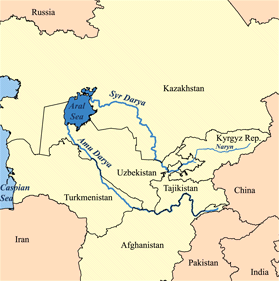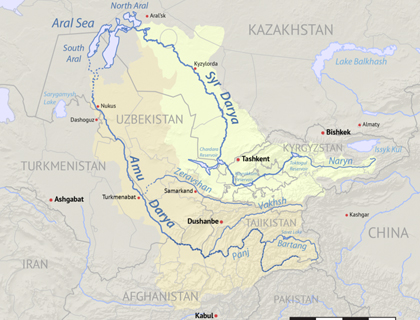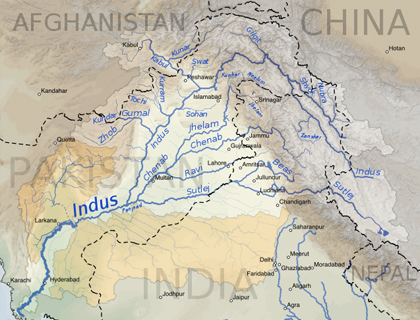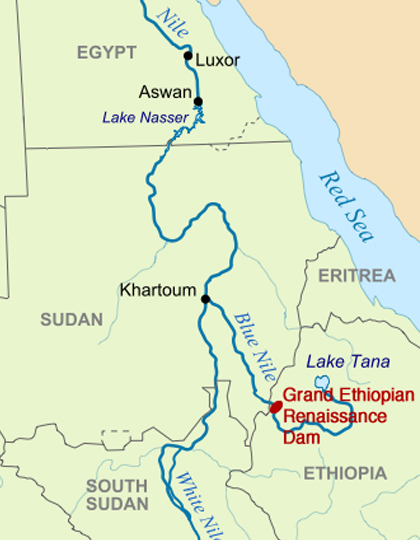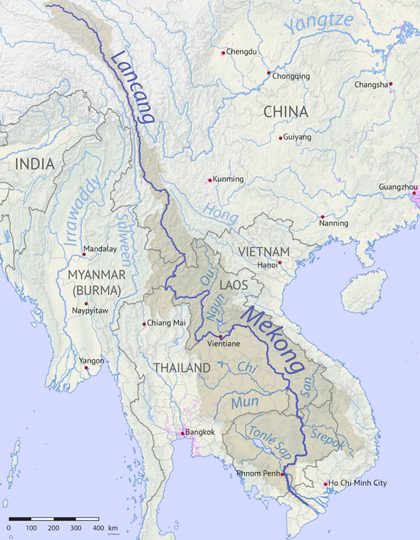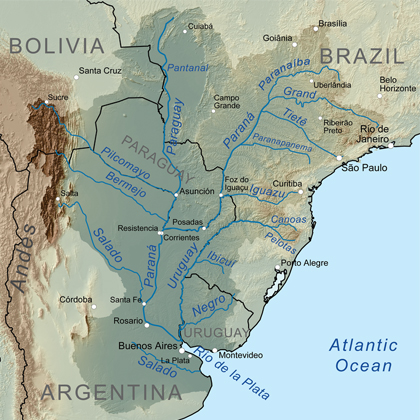Ruta de navegación
Menú de navegación
Blogs
Entries with label syr darya .
The Central Asian republics are fighting over the scarce water resources of the Aral Sea Basin
The lack of effective cooperation between the republics through which Central Asia's two main rivers, the Amu Darya and the Syr Darya, which have historically fed the Aral Sea, flow, is preventing the region's water problems from being resolved. Short-term objectives, such as hydroelectric exploitation or oil exploration, make it difficult to understand, although recent initiatives point in the right direction.
![Satellite image of the Aral Sea, with north below [NASA] Satellite image of the Aral Sea, with north below [NASA]](/documents/10174/16849987/guerra-agua-blog.jpg)
▲Satellite image of the Aral Sea, with north below [NASA]
article / Roberto Ramírez Millán
source of life, food for crops, means of navigation... There are many functions that water fulfills, such as resource human. It is indispensable and necessary for the maintenance and development of any nation. Today this resource It is being depleted due to the great industrial expansion of the last few centuries, mass population growth, and climate change. The dispute over fresh water, given its economic, geopolitical and geostrategic importance, is triggering conflicts between various countries, known as "water wars". That happens in the area of the Asia-Pacific and particularly in the case of the Central Asian region, in the Aral Sea Basin.
Due to the drought that characterizes this area, the Amu Darya and Syr Darya rivers are under particular stress as the main suppliers of fresh water to the countries of Central Asia. Since the collapse of the USSR, together with its organizations for the negotiation of the waters of this basin, and the independence of the countries located in this region, the lack of an effective international organization to regulate the use of this basin, the lack of an effective international organization to regulate the use of this basin, the lack of an effective international organization to regulate the use of this basin, has been the result of the collapse of the USSR. resource between States has led to a series of international conflicts due to inequalities in access to water.
In 1993 the Kyrgyz Republic began using the Naryn waterfall as a source of hydroelectric power, with the intention of making up for the lack of organic fuel. With this new use of infrastructure, which entailed a great retention of water during the summer, the Kyrgyz Republic took the opportunity to sell electricity at exorbitant prices in exchange for gas and coal, which it lacks, to countries such as Kazakhstan and Uzbekistan. The pursuit of the States' own benefit and the lack of cooperation between them made it impossible to achieve any agreement.
In addition, in 1997, Kyrgyzstan declared that the Syr Darya River would cease to be a common good for legal purposes. To this end, it remodeled and restricted the right to use it and required States that benefited from this basin to adopt a financial aid to maintain the freshwater reserves available in their territory. Not satisfied with this, he remarked that if Uzbekistan did not pay, it would sell much of this water to China, thus damaging attempts to reach a treaty. agreement between the two.
These events have not been the only ones that have hindered cooperation between these countries, we could also highlight the sharp global drop in the prices of irrigated agriculture, Uzbek cotton crops that require large amounts of water and the problems resulting from climate change, among others.
Aral Sea
In addition, the current status where the Aral Sea is located. Once one of the four largest lakes in the world and providing economic sustainability to the region, it has been in a state of continuous drought since 1960. Due to the above-mentioned operations on the Syr Darya and Amu Darya rivers, the Aral Sea was divided into two parts, the North Lake and the South Lake, with the eastern part of the South Lake completely evaporating. Previously, the Aral Sea provided between 20,000 and 40,000 tons of fish per year; however, it can currently only supply around 1,000 tonnes.
To deal with drought problems, Kazakhstan developed the project "Regulation of the Darya River Bed and Preservation of the Northern Part of the Aral Sea". This included the construction of the Kokaral Dam on the southern shore of the North Lake, thanks to the support of the World Bank. The dam ensured the growth of that lake by 20%. The project It also provided the Building of a fish hatchery, which fostered a production of between 10,000 and 12,000 tonnes of fish per year.
|
Map of Central Asia |
However, these measures in favour of the development of the Aral Sea are being countered at the same time by the actions of Uzbekistan. If previously the Uzbek part of the Aral Sea was harmed by high irrigation of cotton crops, it is now oil extraction that is damaging the southern lake. Soil drilling in the delta of the Amu Darya River and at the bottom of the Aral Sea play a negative role. In the dilemma between the development of the oil and gas industry and the salvation of its share of the Aral, Uzbekistan is demonstrating what its priority is, given the benefits of the development of hydrocarbons.
Effective cooperation
Researchers and experts in the region are aware that cooperation among the six countries is essential for their development; That is why the Regional Environmental Center for Central Asia (CAREC) was established in 2001, a non-governmental organization tasked with addressing environmental and sustainability challenges in Central Asia and Afghanistan. This organization has denounced that the region is losing 4,500 million dollars annually due to "the lack of effective mutual cooperation between countries", as indicated by its director executive officer, Iskandar Abdullayev.
For this reason, on June 8, the launch ceremony of the Innovation and Innovation Cluster took place with CAREC. research Scientist at the Scope of the management the first in Central Asia, whose goal is "to ensure the effectiveness and sustainability of development". These and similar initiatives are the first steps towards creating a prosperous and sustainable future, avoiding reprisals and preventing possible "water wars".
BIBLIOGRAPHY:
Bernauer, T., & Siegfried, T. (2012). Climate change and international water conflict in Central Asia. Journal of Peace Research, 49(1), 227-239.
Dukhovny, V. A., & Sokolov, V. (2003). Lessons on cooperation building to manage water conflicts in the Aral Sea Basin. Paris: Unesco, 7-16
Karaev, Z. (2005). Water Diplomacy in Central Asia. Middle East Review of International Affairs, 9(1), 63-69.
Sievers, E. W. (2001). Water, conflict, and regional security in Central Asia. NYU Envtl. LJ, 10, 356.
Swain, A. (2004). Managing water conflict: Asia, Africa and the Middle East. Routledge.
Tishkov, V. (1997). Ethnicity, nationalism and conflict in and after the Soviet Union: the mind aflame (Vol. 15). Sage.
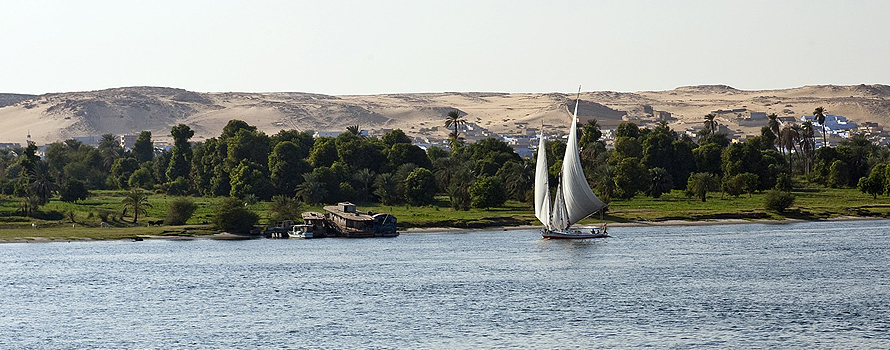
▲Lower Nile River, Egypt [Pixabay]
ANALYSIS / Albert Vidal [English version]
Disputes over control of rivers, lakes, and, in particular, final, are particularly alive today and will intensify in the near future, since, according to the World Health Organization, by 2025 half of the world's population will live in water-scarce areas. Currently, the countries with the most water reserves are Brazil, Russia, the United States, Canada, China, Colombia, Indonesia, Peru, India and the Democratic Republic of Congo. Most water available It is found underground, concentrated in aquifers, or surface water (rivers and lakes). The aquifers with the largest reserves are the Nubian Sandstone Aquifer System (under the Sahara Desert), the Great Artesian Basin (in Australia), and the Guarani Aquifer (in South America). On the other hand, there are a number of rivers in the world that are of exceptional importance, simply because of the enormous amount of population and economic activity that depend on them. Problems arise when these rivers are not part of a single State, but are contiguous or transboundary rivers, and that leads to disputes between some States.
Flashpoints in Asia
Asia is being particularly affected by this problem. There are currently various tensions revolving around water control. One of the most significant cases concerns the use of water from the Indus River, which supports 300 million people and has caused tensions between Pakistan and India. This river is a resource vital for both countries. With the independence of Pakistan, the Indus became a source of disputes. This was addressed by the Indus Water Treaty (1960), which gave India the three eastern tributaries (the Sutlesh, the Ravi and the Beas) and Pakistan the three western rivers (the Indus, the Jhelum and the Chenab). But due to water scarcity, Pakistan has recently protested against the construction of dams on the Indian side of the river (in Indian-administered Kashmir), which restrict the water supply to Pakistan and reduce the flow of the river. India, for its part, defends itself by saying that such projects are covered by the Treaty; Still, tensions don't seem to be abating. For this reason, Pakistan has order the World Bank to appoint the president of an international arbitration tribunal in order to resolve the dispute. This problem of water reserves is at the heart of the confrontation in Kashmir: without an adequate supply, it would not take long for Pakistan to become a desert.
|
Watersheds in Central Asia [Wikimedia Commons–Shannon I] |
Indus River Basin [Wkiwand] |
In Asia, there is also the dispute over the Mekong River, which runs through Cambodia, Vietnam, Laos and Thailand. This conflict revolves around the construction of dams by various countries, as well as the exploitation of the resources provided by the Mekong River. Eleven dams along the river are planned, which would produce a large amount of electricity and be beneficial to some countries, but in turn could threaten the food security of millions of people. The affected countries (Cambodia, Vietnam, Laos and Thailand) formed the Mekong River Commission (MRC) in 1995. This commission was formed in order to promote dialogue and promote the fair and equitable use of the river's waters. The MRC has mediated between countries several times; in 2010 for the construction of a dam by Laos and Thailand, and the same status It happened in 2013. Talks have not been result and there are fears for the lives of millions of people, who could be affected if the conflict escalates.
The ineffectiveness of this body could be summed up as follows: decisions on the construction of dams are made directly without submitting them to the MRC, and construction companies put such pressure on governments that it is very difficult to carry out environmental impact assessments. Moreover, since it is not a binding treaty, members end up ignoring its guidelines and preferring to "cooperate" in a broad sense. In any case, the talks are continuing although, at the moment, the MRC does not seem able to assume the weight of the negotiations. This gives the conflict an uncertain and dangerous future.
A third source of friction is the ex-Soviet region of Central Asia. During the Cold War, these regions shared resources as follows: the mountainous republics (Tajikistan and Kyrgyzstan) had abundant water, and supplied it to the downstream republics (Kazakhstan, Turkmenistan, and Uzbekistan) to generate electricity and irrigate crops. In turn, the downstream republics supplied gas and coal to Tajikistan and Kyrgyzstan during the winter. But when the USSR collapsed, all that changed and there began to be water shortages and power cuts, as these independent countries decided to stop sharing water and energy. As the International Crisis Group think-tank proclaims, "the root of the problem lies in the disintegration of the system of sharing sources imposed by the Soviet Union in the region until its collapse in 1991."
Thus, Kyrgyzstan and Tajikistan have decided to build hydroelectric dams on the Syr Darya and Amu Darya rivers to produce their own energy and thus cope with the constant blackouts (potentially lethal in winter). This, of course, will limit access to water for millions of people living in the other three republics, which has led to small-scale conflicts. Threats have also abounded, such as that of Uzbek President Islom Karimov, who in 2012 said the following: "Water resources could become a future problem that could lead to an escalation of tensions not only in our region, but across the continent"; He added: "I won't name specific countries, but all of this could deteriorate to the point where the result It wouldn't just be a confrontation, it would be wars." Despite the threats, the projects have continued on their way, and therefore an increase in tension in the region can be expected.
|
The Nile Course [Wikimedia Commons–Yale Environment 360] |
Mekong River Basin [Wikimedia Commons–Shannon I] |
Control of the Nile
The Nile River appears as source of tension between various African countries. To understand the existing problem, we must go back more than a century. As early as 1868, Egypt attempted to occupy Ethiopia in order to gain control of the Nile. In 1929 , agreements were signed during the colonial era, in which the waters of the Nile were divided. In these agreements (which were reaffirmed in 1959), Egypt obtained most of the water for its use, while Sudan obtained a small share. The remaining 9 countries in the Nile basin were removed from the treaty. At the same time, Egypt was allowed to build projects on the Nile River while the rest of the riparian countries were forbidden to do the same without Egypt's permission.
In 1999, the Nile Basin Initiative was created: a commission charged with organizing a fair distribution of the Nile's water and resources. But as it did not have the expected effect, in 2010 the agreement of Entebbe (for Ethiopia, Rwanda, Uganda, Kenya, Tanzania and Burundi). This agreement, deeply disputed by Egypt and Sudan, allows riparian countries to build dams and other projects, thus breaking the restrictions imposed by colonial treaties. Moreover, this has shifted the balance in the region, as Egypt and Sudan have lost their monopoly on the Nile's resources.
It is vital to understand the status of these actors. The Nile rises in several countries, and ends up passing through Sudan and Egypt to flow into the Mediterranean Sea. Egypt, in particular, is a country totally dependent on the Nile River. It receives more than 90% of its fresh water from this river, and its industry and agriculture need the Nile to survive. Until a few years ago, thanks to colonial treaties, Egypt had exercised a monopoly on the use of water; But recently, the status it's changing.
Therefore, the confrontation has basically arisen between Egypt and Ethiopia (where the Blue Nile is born). The latter is a country with more than 100 million inhabitants, which in 2011 had a project of dam construction: the Grand Ethiopian Renaissance Dam (GERD). With an investment of 4,700 million dollars, this dam would solve Ethiopia's energy deficit, and would eventually turn this country into a net exporter of electricity (it would produce 6,000 MW per year). The downside is that the dam will be fed with water from the Blue Nile, a tributary of the Nile River. The danger of evaporation of more than 3 trillion cubic meters per year and the reduction of the flow rate to fill the reservation it could catastrophically affect Egypt. In addition, the dangers arising from the overuse of water are compounded by population growth and the demand for better redistribution of water among riparian countries.
This issue has led to tensions between the two countries: in 2010 an email from a senior Egyptian commander was leaked to Wikileaks stating: "We are discussing military cooperation with Sudan against Ethiopia, with plans to establish a base in Sudan for Egyptian Special Forces with a view to attacking the country."project GERD." Egypt also thought of preparing support for proxy rebel groups in Ethiopia, to destabilize the government. In any case, we must bear in mind that Egypt has always tended to use aggressive rhetoric towards all issues related to the Nile (source of life, the engine of its Economics), but in reality the nation of the pharaohs is not in a position to launch armed actions, since its domestic problems have worn down the country, thus losing its position of clear predominance in the region.
But not all the future is so bleak. In March 2015 , a agreement A preliminary agreement between Egypt, Ethiopia and Sudan on the Renaissance Dam and the sharing of water, accepting Ethiopia's right to build the dam without damaging the water supply of Egypt and Sudan. Although these two countries are alarmed at what will happen once the reservation This is a first step towards an era of cooperation. Abdel Fattah el-Sisi himself (Egypt's president) said at the convention: "We have chosen to cooperate and trust each other, for the sake of the development". Finally, in November of the same year, it was not possible to approve an independent commission of inquiry to look at the consequences of the dam, since after Sudan accused Egypt of using part of the Sudanese quota, a war of declarations began, which jeopardized the fragile cooperation between these countries.
Such cooperation in the field of water resources will have a beneficial impact in many other areas and, although a failure of the negotiations cannot be ruled out, it is likely that thanks to the construction of the GERD and regional cooperation, the ties between these countries will become stronger, which can mark the starting point of a new era of peace and peace. development in this region.
A case of cooperation: the Paraná
The Paraná, a border and cross-border river that rises in Brazil and crosses Paraguay to flow into the Rio de la Plata, is a very different example. Its basin is linked to the Guarani Aquifer (one of the largest water reserves in the world), and that is a guarantee of the large volume of water that this river has throughout the year. For this reason, many hydroelectric power plants have been built, taking advantage of waterfalls and rapids. On the other hand, the importance of this river on a political and economic level is core topic; the Paraná and the La Plata Basin feed the most industrialized and populated area of South America. That is why cooperation has been particularly important.
|
The Paraná, central axis of the La Plata basin [Wikimedia Commons–Kmusser] |
The Itaipu Dam (the second largest in the world and the first in world production) is a binational dam, built by Paraguay and Brazil. It was the result of intense negotiations (not always easy), and now produces an average of 90 million MWh (megawatt-hours) per year. Even so, there was not always concord between Paraguay and Brazil: in 1872 disputes over borders began. After many useless agreements, it was agreed to flood the disputed territories and create a hydroelectric dam. The reluctance that the initiative aroused in Argentina, because the regulation affected the flow that, downstream, would continue to the Río de la Plata, resulted in a three-way pact in 1979. In 1984 the dam became operational. Today it is administered by the Itaipu Binational Entity, a business public-private between Paraguay and Brazil, and supplies more than 16% of the total energy consumed in Brazil, and more than 75% of that consumed in Paraguay. Although the environmental impact was great, Itaipu has promoted campaigns to maintain biological reserves and protect fauna and flora. In addition, it has reforested large areas around the reservoir, and ensures the quality of the water.
This is a clear example of the benefits that can be brought by a reasonable and shared use between countries that decide to cooperate. Thus, countries that are parties to some of the current controversies should look to these examples of behaviour which, although not perfect, can be learned a great deal from them.
Although water can be the source of disputes between peoples and nations (such as the cases cited), it also offers very advantageous opportunities (what happened on the Paraná River or the Nile) for countries that manage to cooperate. This cooperation, initiated to avoid conflicts over water, can lead to new stages of harmony and strengthen trade, political and security relations. Is core topic, then, to show how an attitude of willingness to negotiate and cooperate will always have positive consequences for countries that share river flows.

